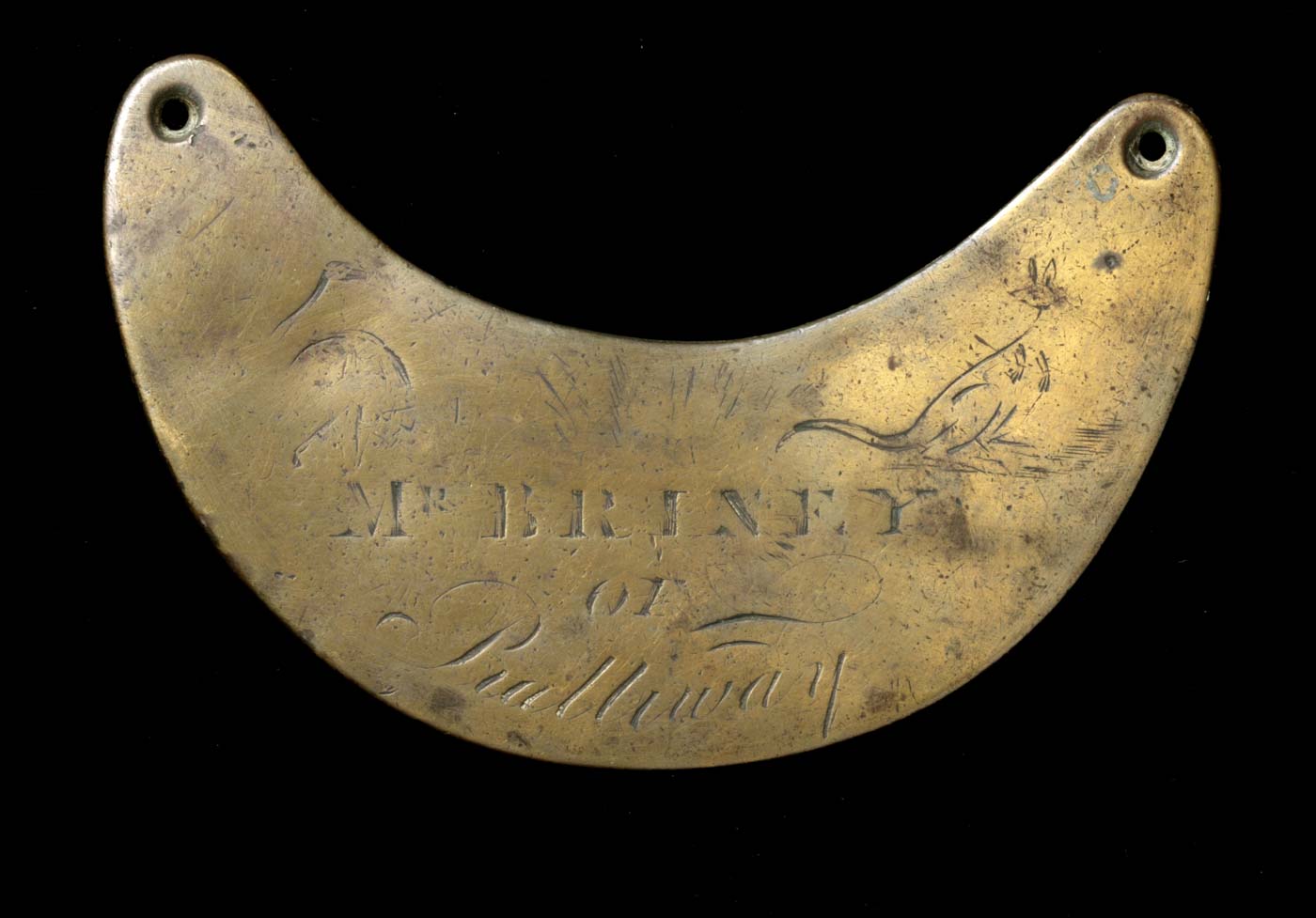Pialliway
This gorget has a very aged appearance, its engraving is very worn and its surfaces are scratched and pitted. The lettering and design of the gorget indicate a mid-19th century date. It is decorated with the popular emu and kangaroo motifs.
Nothing has been uncovered about Mr Briney although his evocative name suggests salt water. He may have spent some time crewing for a colonial ship before finally settling at Pialliway.
Pialliway is very likely to have been Pialawa Station which was in the district of Liverpool Plains, New South Wales, on Pialawa Creek, 15 miles from Tamworth.
It was ‘McDougall’s squattage’. [1] To confuse the issue there is also a listing for a station owned by George Curtis on Pialaway Creek, also in Liverpool Plains and also situated 15 miles from Tamworth. [2]
The name ‘pialliway’ is created from the verb stem baya- ‘speak’ which was a word from the Sydney language that was borrowed into New South Wales Pidgin. [3]
Footnotes
[1] WH Wells, A Geographical Dictionary; or Gazetteer of the Australian Colonies, 1848, The Council of the Library of New South Wales, Sydney, 1848, p. 339.
[2] Wells 1848, p. 339.
[3] J Troy, ‘Australian Aboriginal Contact with the English Language in New South Wales: 1788-1845’, Pacific Linguistics, B-103, 1990; J Troy, The Sydney Language, the author, Canberra, 1993; J Troy, ‘The Sydney Language’ in McGregor, W (ed.), Macquarie Aboriginal Words: a dictionary of words from Australian Aboriginal and Torres Strait Islander languages, Macquarie Library, Sydney, 1994; and J Troy, ‘Melaleuka: a History and Description of New South Wales Pidgin’, PhD thesis, Australian National University, 1995.
